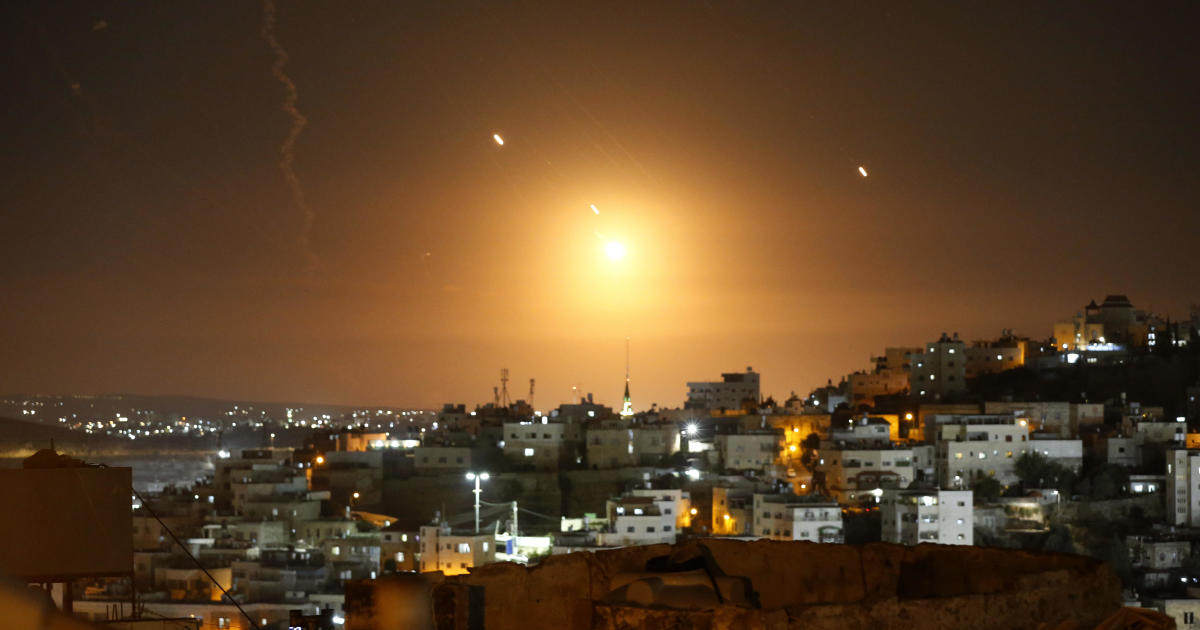Iran’s missile attack on Israel was a significant event that involved a large-scale barrage of missiles launched from Iranian territory towards Israel. The attack triggered immediate responses from both Israel and the United States, highlighting the complex geopolitical dynamics of the Middle East. The incident resulted in widespread alerts, interceptions, and assessments of damage, prompting global attention and concerns about potential escalation. This analysis will focus on the key aspects of the event and its implications.
The Iranian Missile Attack and Israeli Response
The Scale and Nature of the Attack
Iran launched a significant number of missiles toward Israeli territory. Reports varied, with figures ranging from nearly 200 (as reported by U.S. officials) to approximately 180 (as stated by the IDF). The missiles appear to have been launched in waves, causing repeated rounds of sirens and explosions across Israel. This coordinated attack demonstrated Iran’s capacity for a large-scale offensive operation against a major regional power. The timing of the attack, on the eve of Rosh Hashanah, further highlighted its provocative nature. While Iran framed the attack as a response to previous Israeli actions, it lacked specifics about specific targets of the attack. The claim of victory on Iranian state television lacked evidence, considering the high interception rate, with several sources stating almost all were intercepted or fell short of their targets.
Israel’s Missile Defense System and US Assistance
Israel’s Iron Dome and other missile defense systems played a crucial role in intercepting a substantial number of the incoming missiles. The Israeli military reported a “large number of interceptions,” suggesting a high degree of effectiveness for the system, however a smaller number did manage to make it through the Israeli defense systems, some missiles hitting their intended targets. This coordinated response indicates a high level of preparedness for such an event. The U.S. provided critical support, with U.S. Navy destroyers joining in firing interceptors to help defend against the missiles in what seemed like a collective effort to counter Iran’s aggressive move. This collaboration underscores the close security relationship between the U.S. and Israel, in times of conflict or threatened attacks.
Damage Assessment and Casualties
While the majority of the missiles were intercepted, initial reports from Israel indicated that some missiles did land and that damage assessments were ongoing. Israeli officials downplayed the extent of damage, however, there was evidence of a number of injuries and possible civilian casualties. The Israeli prime minister declared the attack a failure. However, it is noteworthy that a separate incident in Tel Aviv that same day resulted in at least six civilian deaths from a shooting before the missile attack, with accounts varying on where this incident occurred.
Geopolitical Implications and International Response
US Involvement and Regional Tensions
The United States’ active involvement in intercepting missiles, through joint operation alongside Israel, showcases the deepening strategic cooperation between the two nations and demonstrates Washington’s commitment to Israel’s security, potentially raising tensions with Iran. This joint effort could escalate tensions in the region further as it may be seen as an act of joint aggression from Israel and the United States.
International Condemnation and Calls for De-escalation
The international community, primarily via the United States, quickly condemned the attack, underscoring the widespread view that it was a blatant act of aggression, a direct violation of international law. However the level of severity of these sanctions or threats of sanction remains yet to be determined. However, amid escalating tensions between Iran and its regional enemies, a renewed call for peace between nations came from senior U.S officials, as these ongoing hostilities risk sparking a much broader conflict. The US had also increased the number of troops stationed in the Middle East in a recent decision intended as a measure to counter increased aggression from Iran, however the US are actively engaged in peace talks aiming to calm international relations.
Iran’s Justification and Potential Escalation
Iran’s Stated Reasons and Motivations
Iran’s justification for the attack centered on the recent conflicts involving Israeli actions targeting Iranian assets, but provided little evidence in support of their claim. Such attacks by Israel may include missile strikes directed towards military installations controlled by Iran, or operations aimed at suppressing Iranian agents involved in conflicts and/or sabotage operations in the region. Regardless of the reasoning presented, this direct assault could be the catalyst for further conflicts.
Risks of Further Escalation and Proxy Conflicts
The attack increases the risk of further escalation and potentially involvement of other groups. This situation is especially precarious, given that Iran supports various proxy groups across the Middle East. It is unknown whether additional attacks from those proxies could occur in retaliation against the aggression observed. It remains to be seen how far these ongoing disputes will extend before an official treaty or other solution is found.
Takeaways
- The Iranian missile attack on Israel was a significant event with wide-ranging implications.
- Israel’s missile defense system proved largely effective, with US assistance.
- The incident underscores the tense geopolitical situation in the Middle East and the strong US-Israel alliance.
- The potential for further escalation, both by Iran and its proxies, remains high, leading to urgent calls for de-escalation.




